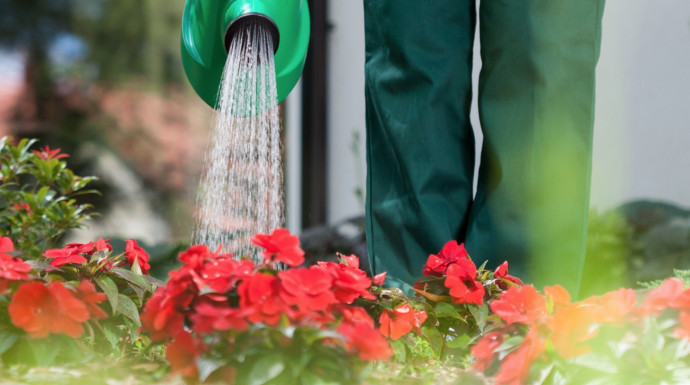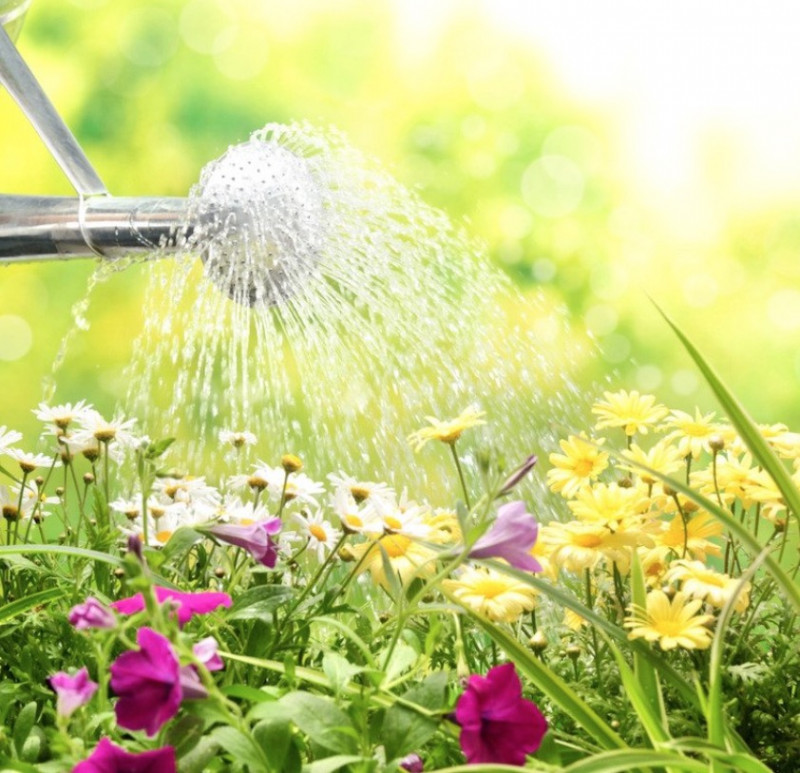Summer Watering Guide

Water is undoubtedly the lifeblood of every tree, shrub and plant on earth, the indispensable element that enables plants to survive and grow. All plant tissues are primarily made up of water, and experts tell us that plants release 90% of the water they absorb into the air through transpiration. Therefore, in order to maintain healthy plants in your garden, there must be an adequate amount of water available at all times to meet their needs.
Carefully monitoring and adjusting the soil moisture around your plants will increase the likelihood that you will have a healthy, vibrant garden. Here are some useful summer watering tips to ensure your plants receive enough water to thrive throughout the summer.

When planting new trees and shrubs, it is important to ensure that the roots are effectively contact their new surrounding soil so that they can absorb water - thorough soaking of the soil at planting is desirable, as this will also reduce air pockets that interfere with soil-root contact. Some gardeners recommend flooding the freshly dug planting hole with water after adding amendments and before setting the roots; others soak the area as soon as the root ball is in place; both methods are effective. Always follow recommended planting guidelines (available at your local garden center) for plants grown in root balls or containers. It is also important to build a water-retaining saucer or berm around the base of each plant to allow water to penetrate effectively into the root area. Check the soil around newly planted plants 2-3 times a week for the first year for adequate moisture.
Give your new plantings a consistent weekly watering, always applying at least an inch. This will help their root system get established. Some types of plants may need more frequent watering, especially in the first few weeks after installation and when there is no rain. Loamy soils need watering less frequently than sandy soils, but never let the soil dry out in the root zone: dig 3 to 4 inches deep in the root zone to feel the moisture in the soil with your hands, and add water if the soil is too dry and friable. Also be careful not to overwater and drown the roots if the soil feels soggy.
Here's how much water you should use with each application for your newly planted trees and shrubs:
- Small shrubs up to about 3 feet tall and wide: 4-5 gallons.
- Large shrubs over 3 ft.: 7-10 gallons
- Small trees with a trunk diameter of less than 2" (caliper): 7-10 gallons
- Larger trees with more than 2" trunk diameter: 10-20 gallons
General Watering Tips:
- Landscape plants are not picky about water quality. As an alternative to expensive drinking water, you can use recycled water from your roof, washing machine, bathtub, or car wash.
- Watering in the morning is best. This allows the water to soak in before it is evaporated by heat and dry wind, gives the leaves time to dry out when sprinkled, and gives the plants moisture to draw from during the heat of the day. Late afternoon is second best, just make sure the foliage dries out before nightfall. Avoid watering in the heat of the day, as the water will evaporate much faster and over-spraying the leaves can cause burns.
- Water at the base of the plant with a watering wand, long-necked watering can, soaker hose or drip system. Avoid getting leaves, fruits or vegetables wet to prevent diseases that thrive on moisture, such as powdery mildew.
- Wind dries out plants quickly because moisture is lost through the foliage - the larger the leaves, the more moisture is lost (e.g., squash, cucumbers, coral bells, etc.). Protect plants with barriers, such as a shade cloth structure, or place them out of wind-prone areas.
- Fruits and vegetables need constant water to thrive. Don't let plants dry out completely before watering again, as this can lead to problems like blossom end rot or cracked tomatoes.
- Planters dry out much faster than the soil and need to be watered more often, especially if they are in full sun or exposed to the wind.
- Apply a two to three inch layer of organic mulch, such as bark, pine needles or shredded leaves. This will help retain moisture in the soil.
